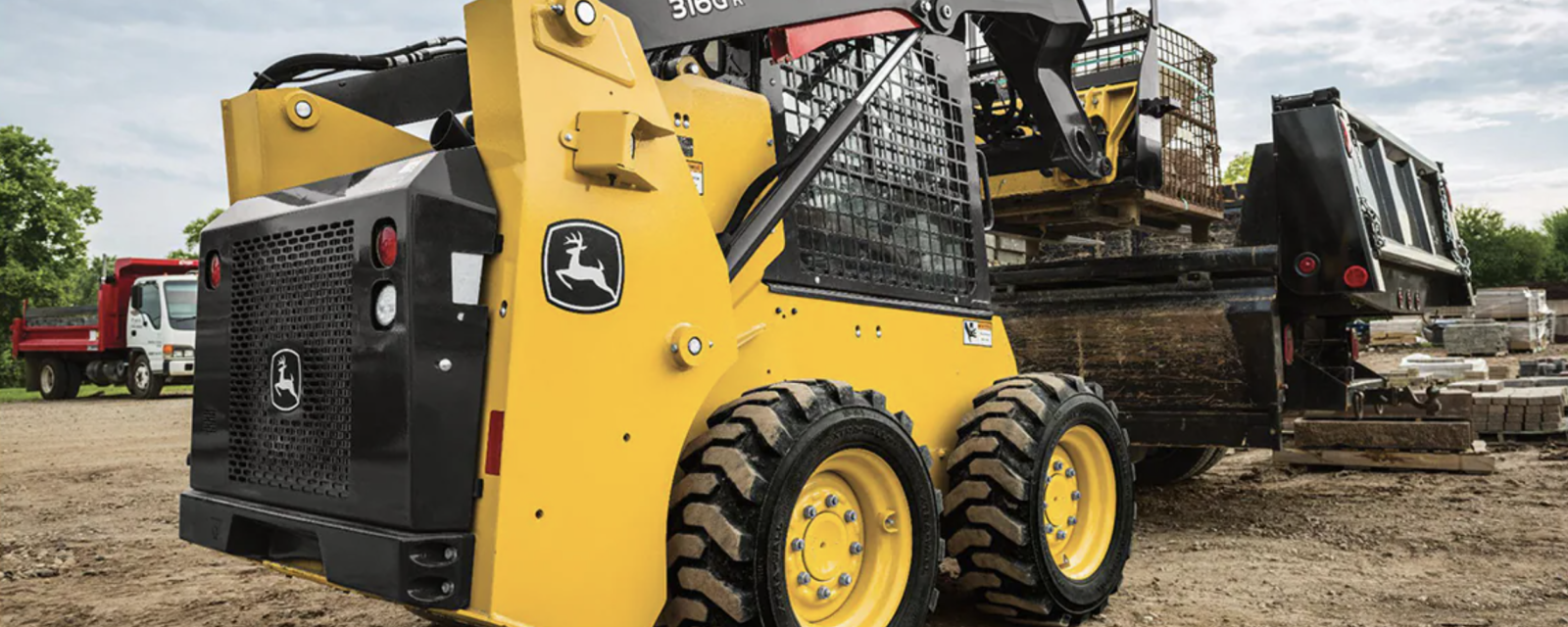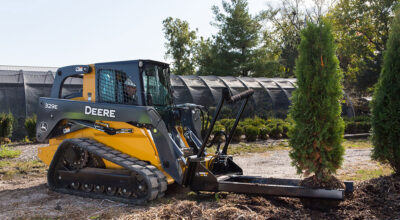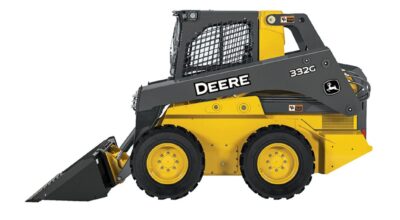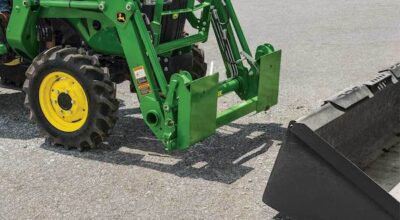In the world of construction equipment, choosing between a tracked or wheeled skid steer can be a tough decision. Both options have their own set of benefits and drawbacks, which is why it’s important to understand the detailed comparison between the two before making a buying decision.
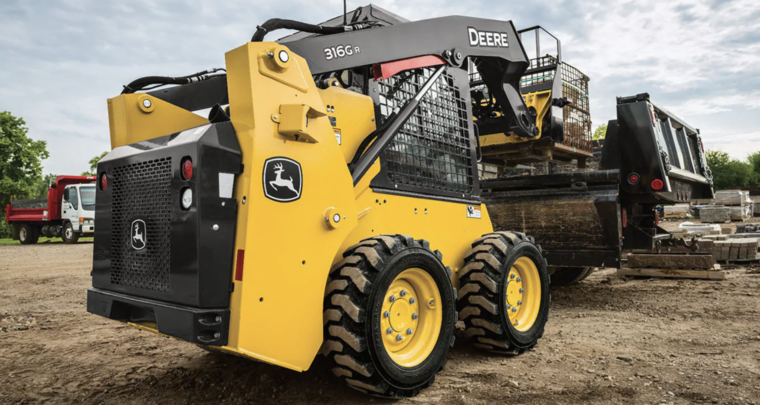
From maneuverability and traction to maintenance costs and terrain versatility, this blog will discuss the models, features, and specs to help you choose between a John Deere tracked or wheeled skid steer.
What Is a John Deere Tracked Skid Steer?
John Deere tracked skid steers, also called compact track loaders, are machines designed for construction, landscaping, and other applications on soft and uneven terrain. Equipped with two tracks for superior traction, they move swiftly through challenging environments. The John Deere tracked skid steer vertical-lift design allows for high and far-reaching loading, boosting efficiency. With over 100 attachment models available, they can handle a wide range of jobs, such as site preparation, landscaping and material moving, and farm maintenance.
What Is a John Deere Wheeled Skid Steer?
John Deere wheeled skid steers, also called skid steer loaders, are designed for speed and maneuverability for applications on firm, flat surfaces. Equipped with wheels for quick movement and easy turning, they’re optimal for urban construction sites, paved areas, and stable ground environments. For easy transport, John Deere offers small frame wheeled skid steers with convenient front and rear tie-downs, along with mid- and large- frame models for greater power and lift height. Like the tracked skid steers, the wheeled skid steers come with over 100 attachment models for maximal versatility across many farm and construction use cases.
What Are the Different John Deere Tracked Skid Steer Models?
All John Deere tracked skid steers use a Yanmar engine and feature a vertical-lift design for high rises and far reaches, enabling quick and easy loading. They vary in rated operating capacities from 965 kg (2,125 lb.) in the 317G to 1827 kg (4,025 lb.) in the 335 P-Tier.
John Deere 317G
The 317G has a rated operating capacity of 965 kg (2,125 lb.), 48.5 kW (65 hp) gross power, and track shoe width of 320 mm (12.6 in.). This model is a tracked small frame machine, built for speed and mobility in tight spaces.
John Deere 325G
The 325G holds more power, with a 1,176 kg (2,590 lb.) rated operating capacity and 54.8 kW (74 hp) gross power.
John Deere 331 P-Tier
Starting the line of P-Tier tracked models, the 331 P-Tier holds a 1,430 kg (3,150 lb.) rated operating capacity, 73.0 kW (98.0 hp) gross power, and 400 mm (15.8 in.) track shoe width. The P-Tier introduces enhanced digging and breaking capabilities, featuring a bucket break force of 4,994 kg (11,000 lb.) in the 331.
John Deere 333 P-Tier
The 333 P-Tier takes it a step further, with a 1,748 kg (3,850 lb.) rated operating capacity, 80.9 kW (108.5 hp) gross power, 450 mm (17.7 in.) track shoe width, and bucket breakout force of 6,243 kg (13,750 lb.).
John Deere 335 P-Tier
At the top of the line, the 335 P-Tier holds the highest rated operating capacity of 1,827 kg (4,025 lb.). With a gross power at 88.0 kW (118.0 hp), it’s also the most powerful John Deere P-Tier tracked skid steer.
What Are the Different John Deere Wheeled Skid Steer Models?
John Deere provides a diverse selection of wheeled skid steers to fulfill various needs, from the small-frame 316GR, designed for lighter tasks, to the 334 P-Tier for high-power and lifting-intensive applications.
John Deere 316GR
The first wheeled small frame machine, the 316GR, holds a rated operating capacity of 795 kg (1,750 lb.), 48.5 kW (65 hp) gross power, 2.92 m (9 ft. 7 in.) lift height, and 1,816 kg (4,000 lb.) bucket breakout force.
John Deere 318G
The 318G is the second wheeled small frame machine, offering an increased rated operating capacity at 883 kg (1,945 lb.), lift height at 3.07 m (10 ft. 1 in.), and bucket breakout force of 1,930 kg (4,250 lb.).
John Deere 320G
The 320G brings a power boost with a 994 kg (2,190 lb.) rated operating capacity and 51.7 kW (69 hp) gross power.
John Deere 324G
The 324G is fitted with a 1,221 kg (2,690 lb.) rated operating capacity, 55.0 kW (74 hp) gross power, 3.20 m (10 ft. 6 in.) lift height, and 2,724 kg (6,000 lb.) bucket breakout force, bringing power and lift capacity up a notch.
John Deere 330 P-Tier
Starting John Deere’s line of P-Tier wheeled models, the 330 P-Tier boasts a 1,339 kg (2,950 lb.) rated operating capacity, 73.0 kW (98.0 hp) gross power, 3.35 m (11 ft.) lift height, and 4,767 kg (10,500 lb.) bucket breakout force.
John Deere 332G
At the top of the G-Series wheeled model lineup, the 332G holds a staggering 1,632 kg (3600 lb.) rated operating capacity, 74.6 kW (100 hp) gross power, and 6,243 kg (13,750 lb.) bucket breakout force.
John Deere 334 P-Tier
The 334 P-Tier reigns as the strongest wheeled skid steer, with a 1816 kg (4,000 lb.) rated operating capacity, 88.0 kW (118.0 hp) gross power, and 6,259 kg (13,800 lb.) bucket breakout force.
John Deere Tracked vs. Wheeled Skid Steers: Key Features
The G-Series and P-Tech models share many features across both tracked and wheeled skid steers. However, certain models come with specific features tailored to fit your unique needs.
Wide Array of Attachments
All John Deere skid steers can be equipped with our vast array of attachments such as augers, trenchers, brooms, mulchers, and hammers. With this extensive selection of tools, your skid steer is versatile, making it an invaluable, multipurpose machine for any jobsite.
Spacious and Updated Cab
G-Series models are built with 25% more cab space, creating a spacious feel. These updated cabs are also sealed to keep dust particles and excess noise out and have heated seats to keep you warm while working in cold weather.
Electrohydraulic (EH) Controls
John Deere skid steer cabs are also equipped with electrohydraulic (EH) controls, which allow you to adjust machine operations to match your preferences. EH controls require less effort over long work periods compared to manual linkages, reducing fatigue and improving operator productivity.
Small Frame Machines
The 317G, 316GR and 318G model skid steers are small frame machines. Their compact size and clear sightlines help you to maneuver confidently in small areas and tight spaces.
Additional Mobility Features
Since the 317G, 316GR, and 318G models are small frame machines, they’re easy to transport and have a compact footprint compared to their mid- and large- frame machine counterparts. Integrated to the front and rear of these machines are accessible tie downs, designed for fast and secure transport between job sites.
Ease of Serviceability
The 325G, 320G and 324G models feature enhanced serviceability that minimize maintenance time and maximize working hours. The hood on these models tilts up for ground-level access to the dipstick, fuel and fluid filler necks, filters, and see-through reservoirs. The cab can be shifted for drivetrain access in under five minutes, and the footwell is easily detaching for removing dust and debris buildup.
Large Frame Machines
P-Tier models are large frame machines that not only provide power for demanding work, but also present a suite of new technology solutions that optimize work efficiency and accessibility.
The new Attachment Manager, included on large frame machines with touchscreen displays, automatically selects optimal power and pressure settings for whichever attachment you’re using. This new feature also allows you to set and save attachment preferences, mitigating downtime from parameter adjustment and leaving more time for actual work.
Furthermore, large frame machines feature Surround View, providing 270-degree bird’s eye view visibility from the top of the skid steer. Images captured from cameras mounted on the machine exterior are stitched together and presented on a display attached to the seat.
Redesigned 330 and 331
The 330 and 331 P-Tech models were reimagined to enhance power and comfort. They come with greater horsepower than their G-Series counterparts, providing enhanced power for when your work needs it. To top it off, the 330 and 331 P-Tech models include heated and ventilated seats, touchscreen displays, Bluetooth compatibility, and an overall boost in cab comfort and control accessibility.
Quik-Tatch Durability Improvements
P-Tech models come equipped with durable Quik-Tatch couplers, cutting the downtime from switching back and forth between attachments. The new couplers are designed to increase longevity using a straight flag pin, clevis style plat and boss, and stronger steel. They also feature a 46% increase in bucket rollback stop surface area, which helps extend the life of your Quik-Tatch components.
John Deere Tracked vs. Wheeled Skid Steers: Key Specs
John Deere skid steer specifications differ between tracked and wheeled models, but can be largely classified into three categories with many shared features: small frame machines (317G, 316GR and 318G), G-Series (except for small frame machines and the 332G), and P-Tech models.
Lift Geometry
All John Deere skid steers have vertical lift geometry, with an exception on the 316GR, which uses radial lift geometry.
Rated Speed
Small frame machines have a rated speed at 2,600 rpm, while the mid- and large- skid steers have a rated speed at 2,500 rpm.
SAE Net Power
John Deere skid steers range in net power from 45.6 kW (61 hp) in the 317G and 316GR models to 85.5 kW (114.7 hp) in the 334 and 335 P-Tier models.
Aspiration
All P-Tier models use intercooled turbo aspiration. The G-Series skid steers use turbo aspiration, with the exception of the 320G, which is naturally aspirated.
Displacement
The 320G, 324G, and 325G models feature a 3.3 L (203 cu. in.) displacement. All P-Tier models and the 332G have a 3.1 L (186.3 cu. in.) displacement, and small frame machines have a 2.1 L (128 cu. in.) displacement.
Tire Size
Small frame machines use 10 – 16.5 size tires, G-Series models with the exception of the 332G use 12 – 16.5 size tires, and the P-Tech models along with the 332G use 14 – 17.5 size tires.
Rated Operating Capacity
Tracked skid steers have rated operating capacities ranging from 965 kg (2,125 lb.) in the 317G to 1,827 kg (4,025 lb.) in the 335 P-Tier. Wheeled skid steers range from 795 kg (1,750 lb.) in the 316GR to 1,827 kg (4,025 lb.) in the 334 P-Tier.
Maximum Speed
For tracked skid steers, maximum speed sits at 13.7 km/h (8.5 mph) on the 335 and 333 P-Tier models, 13.2 km/h (8.2 mph) on the 325G, 12.6 km/h (7.8 mph) on the 331 P-Tier, and 11.3 km/h (7 mph) on the 317G. For wheeled skid steers, the 316GR, 318G, 320G, and 324G share a maximum speed of 11.1 km/h (6.9 mph); the 334 P-Tier and 332G share a maximum speed of 19.3 km/h (12 mph); and the 330 P-Tier leads in maximum speed at 20.1 km/h (12.5 mph).
Hydraulic Power
Tracked skid steers vary in hydraulic power from 24.729 kW (33.1 hp) in the 317G to 38.1 kW (51.1 hp) in the 335 P-Tier. Wheeled skid steers range from 24.729 kW (33.1 hp) in the 316GR to 37.5 kW (50.3 hp) in the 334 P-Tier.
Operating Weight
For both tracked and wheeled skid steers, operating weight increases with model superiority. The 317G is the entry level tracked skid steer at 3,824 kg (8,423 lbs), while the 335 P-Tier is the heaviest at 5,584 kg (12,300 lbs). In the wheeled skid steer lineup, the 316GR starts at 2,806 kg (6,180 lbs), and the 334 P-Tier reaches up to 4,660 kg (10,264 lbs).
John Deere Tracked vs. Wheeled Skid Steers: Where to Find One?
Both the John Deere tracked and wheeled skid steers offer various models varying in size and power to adapt to your needs. Whether you’re looking for a tracked skid steer for construction work on soft and uneven terrain, or a wheeled skid steer for use on firm and flat surfaces, John Deere has an option for you.
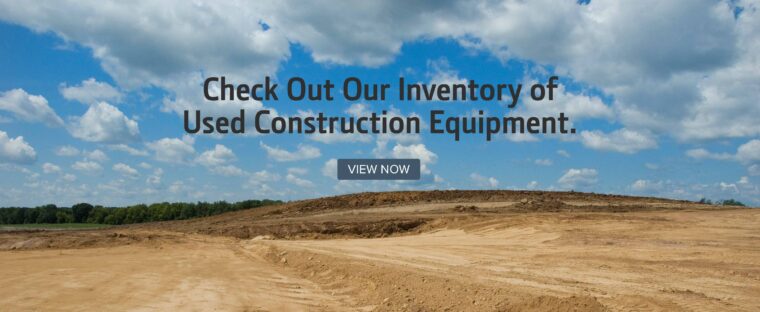
To find a John Deere skid steer best fit for your needs, contact your local John Deere dealer.
